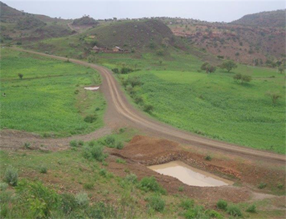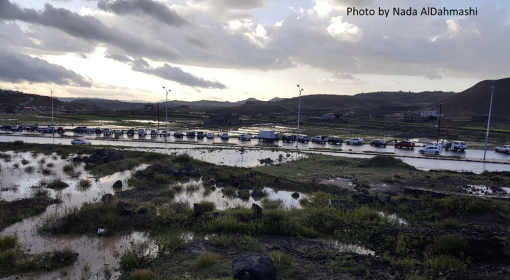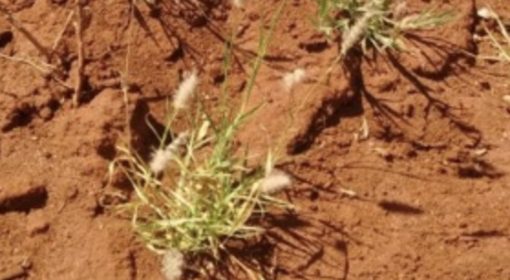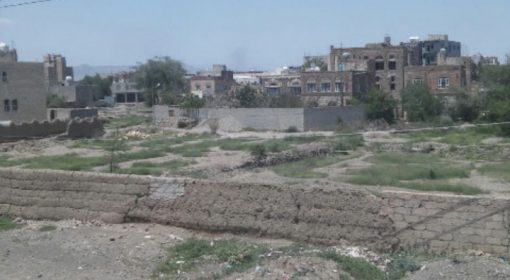By Madiha Al-Junaid (This article was written during the rainy time this summer, July and August. At that time Yemen witnessed a generous wet season this year).
Last year, 2015, was recorded as a dry year in Yemen. That had impacted the atmosphere, agricultural production, and the water table level in many villages; countryside areas; and main cities. This year on the contrary witnessed heavy rains and floods in many areas during its two rainy seasons, from March to May and July to September.
Despite the fact that the farms were extensively irrigated where rain amounts fulfilled lands’ needs and many areas turned widely green, the country doesn’t have good structures nor roads to adapt to such situations of heavy rains. Houses in some poor areas got damaged, and roads in many parts of the main cities, let alone in those in the villages and countryside, are damaged too until this very moment; causing trouble and traffic to the population.
In housing areas near the northern mountains surrounding the capital city of Sana’a lies the house of a modest-living family. They have a small car and a one-floor house made of bricks. The house stands bare against nature, storms and rain. The issue with heavy rain and unexpected floods coming down from top of the mountain is the huge rocks coming along the way blocking their already-damaged roads. This makes cars unable to drive all the way to the main road, and hence the residents of the area need to walk long distances to reach public transportation. We are here speaking about the main capital city, what about other less ‘cared-for’ places?

Destructed roads (Intisar Al-Amri)
“The problem is not the flood and what it brings, the problem is having a government that wouldn’t blink an eye for what happened. It is usually us (the residents of the area) who collect money and rent a wheel loader to get all those huge rocks away from the road and our houses. Still, it takes them too long to pay and many who care none wouldn’t necessarily pay,” a female resident said.
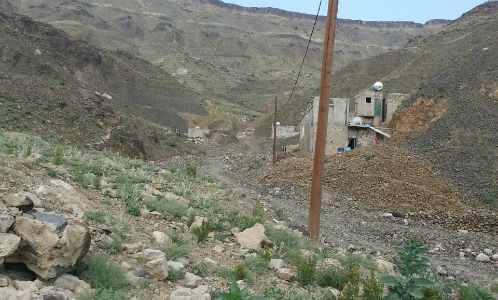
Cleaned road (Intisar Al-Amri)
Not only the roads near the mountains that get damaged, the main roads do too. Driving around in Sana’a you realize how roads are being seriously damaged. Cars are suffering to get through the different roundabouts with those huge potholes on the ground.
“We already have the burden of those cement, rope and earth speed humps, and now those holes that restricts the movement of cars and cause traffic, not to mention the damage to cars that they cause,” a taxi driver complained. From an engineering point of view, the roads construction materials used are of low quality, “hence damages and holes is what we see when rain falls heavily,” an engineer explains. Moreover, vats and similar structures are not well-implemented in the roads, thus rain drains very slowly where in many times as mentioned causing chuckholes, and breakdown of cars’ engines where then insane traffic is witnessed.

Potholes in the roads (Wael Al-Derwish)
The bright side
Despite all burdens caused by the lack of care when talking about roads construction in Sana’a and several other parts of the country, the rain came in as a blessing for all the people. Atmosphere and high temperature degrees were cooled down, and it “seemed like we had no hot summer during the rainy days,” a neighbor of mine mentioned delightfully.
There are too many benefits/ blessings to mention in this sheet, however, two main things I will pay attention to: Grass for the cattle; and the seasonal fruits.
Grass for the cattle
The rain revived not only the dry and dusty atmosphere, but also the lands. Green is everywhere, and hence grass covers most areas that we used to see nothing in but brown dirt. This is good for the cattle specifically in the main city as the owners usually take them to garbage places to feed from, causing diseases and poisoning to consumers.
“It looks healthy having the sheep and goats feed from grass. They are fed by nature,” said an old lady who mentioned she was fed up with cattle owners who guide their cattle to garbage locations for food.

Grass growing at unexpected places feeding cattle (Madiha Al-Junaid)
Seasonal fruits
Last year did not witness this year’s variety of fruit production. Fruits from peach, banana, and others are available with low prices, unlike the past year when all fruits prices went high.
During this season we had many options to go for in the local fruits market. This is not only a good thing for the consuming population, but for the farmers and marketers as well. In conclusion, it seems like we are never prepared here in Yemen, we are just floating with the waves. There is an urgent need for strategies, adaptation plans, very-good-quality construction, and sustainable agricultural food production. It is good to look at the bright side of rain that comes along with greener environment and better agricultural production, however, it is smart and important to be set and prepared for what comes with the rain.
